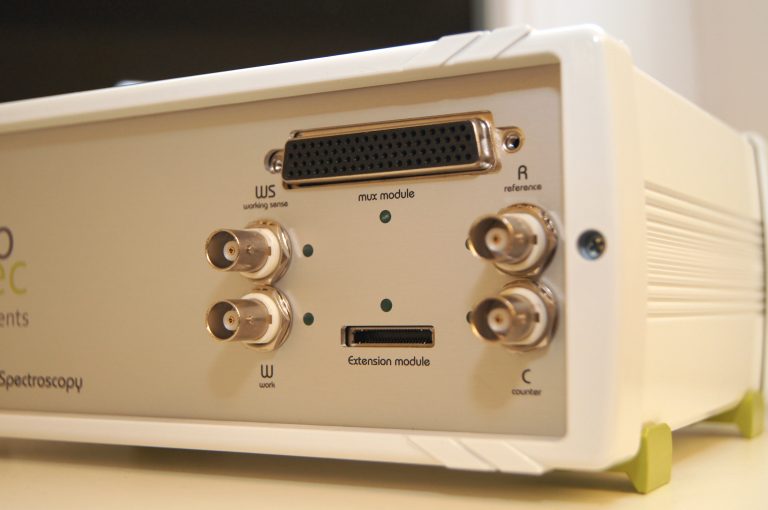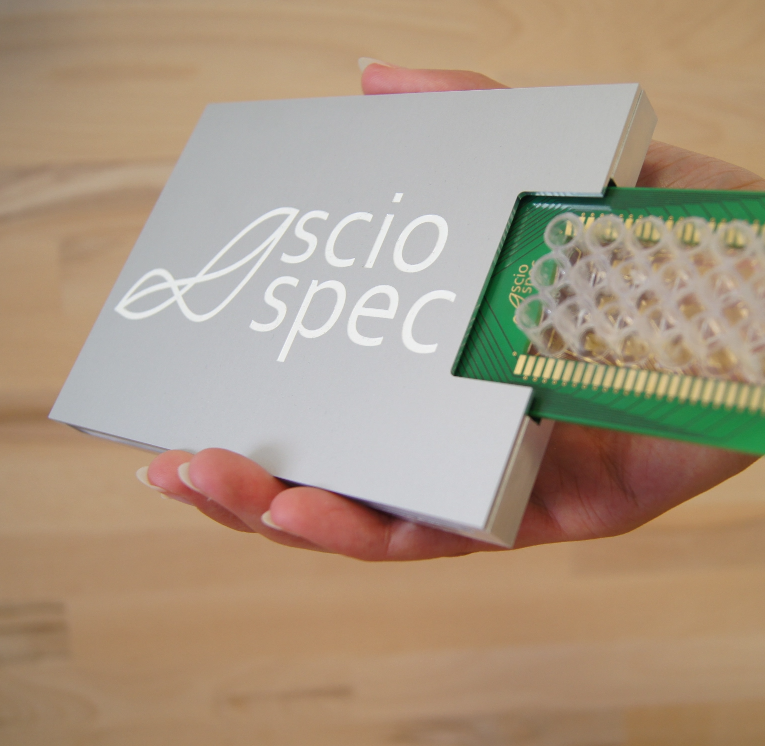

A new scientific study titled “Bioimpedance Technique Application to Determine Cellular Damage Consistent with Pore Forming Cell Cytotoxicity” has demonstrated how electrical bioimpedance spectroscopy can assess the physiological impact of toxins on living cells.
Using the Sciospec ISX-3 impedance analyzer, researchers measured electrical properties of cells exposed to Vibrio cholerae cytolysin (VCC) to detect structural changes caused by membrane perforation. This approach illustrates how impedance-based methods support non-invasive quantifiable cellular health assessments.
*Ramos-Ramon, P.I., Garcia-Evangelista, J.M., Arias-Gonzalez, L., González-Díaz, C.A., & Figueroa-Arredondo, P. Bioimpedance technique application to determine cellular damage consistent with pore forming cell cytotoxicity. Computación y Sistemas (2024). https://www.cys.cic.ipn.mx/ojs/index.php/CyS/article/view/5681
Understanding how cells respond to harmful agents is essential in many areas from drug development and infectious disease research to biosensor design. In this study, researchers used Electrical Bioimpedance Spectroscopy (EBiS) with the support of Sciospec’s ISX-3 impedance analyzer to examine how a bacterial toxin called Vibrio cholerae cytolysin (VCC) affects cell health. VCC forms tiny pores in the cell membrane, disrupting its natural function and leading to cell stress or damage.
The ISX-3 enabled precise multi-frequency measurements that revealed clear electrical differences between healthy and toxin-exposed cells. Most notably, the team observed a reduction in impedance values indicating a loss of membrane integrity. Using these measurements, they applied a disintegration index to quantify how severely the cells were affected.
🔍Want to learn more about how our technology supports toxin and cell damage research? Contact Our experts we’re happy to help


The Sciospec ISX-3 impedance analyzer was used to perform multi-frequency measurements across all test samples. Its frequency coverage and signal stability allowed researchers to distinguish electrical characteristics between untreated and toxin-exposed cells with high precision.
Specifically it enabled:
This study builds on previous bioimpedance research using Sciospec technology showing how Electrical Bioimpedance Spectroscopy can detect dynamic changes in various biological systems.
➡️ Still Have questions about how impedance analysis works or how to use it in your own lab ? See our FAQ section below or Contact Us directly
The ISX-3 offers features well-suited to applications involving cytotoxicity, membrane dynamics and live cell characterization including:
These capabilities provide the technical foundation for researchers studying phenomena like vacuolization, apoptosis or necrosis as in the case of the VCC toxin model.
📚Discover the full technical specifications and how the ISX-3 can advance bioimpedance research.


For experiments requiring multiple samples, varying concentrations, or long-term monitoring, the ISX-3 system supports modular expansion via multiplexers. Available configurations include:
This makes it possible to monitor several cell cultures or test conditions in parallel response studies or high-throughput toxicology screening.
➡️ Need to monitor multiple cultures or conditions in parallel? Explore our multiplexing solutions for toxicology workflows.
Impedance Solutions for Biosensors & Cell Assays
Sciospec’s platform offers a versatile foundation for biosensor development and live-cell assays supporting applications in organ-on-chip, barrier integrity, drug screening and label-free cell monitoring.
With customizable chip adapters and modular interfaces, our technology seamlessly integrates with microfluidic and lab-on-chip formats empowering innovators like Mimetas and Nanion Technologies to bring their solutions to life.
💡 Whether you’re working on impedance-based barrier models or integrating EIS into high-throughput systems, our biosensor-focused tools deliver the precision and scalability your research demands.
🔬 Ready to Elevate Your Biosensor Workflow? Talk to Us about customizing the right solution for your application.


Our experts are ready to help you understanding how this technology works and how you can apply and integrate it into your work. Get in touch today to get a personalized consultation to enhance your work with our advanced solutions
Vibrio cholerae cytolysin (VCC) is a bacterial toxin that forms pores in cell membranes, disrupting their function and leading to cell stress or death. Understanding how VCC affects cells is critical for research in infectious diseases and toxin-induced cytotoxicity.
➡️Sciospec’s advanced bioimpedance technology enables researchers to detect these membrane disruptions in real time by measuring electrical changes in cells exposed to VCC.
Bioimpedance spectroscopy measures how electrical currents pass through cells, which changes when the cell membrane is compromised by toxins. By analyzing the impedance magnitude and phase shifts over a range of frequencies, it provides insight into cell health and membrane integrity.
➡️ Sciospec’s ISX-3 provides researchers with multi-frequency insights that align with early-stage cytotoxic events, making it a strong fit for both discovery and validation workflows
Unlike many traditional assays that require labels or dyes, electrical bioimpedance spectroscopy is non-destructive and allows continuous, real-time monitoring of live cells without altering their behavior. This label-free approach captures dynamic cellular changes efficiently.
➡️Sciospec’s bioimpedance analyzers support this technique with high sensitivity and broad frequency coverage, enabling more detailed and reliable cell viability assessments.
Yes. Modern impedance systems can be expanded with multiplexing capabilities to measure multiple samples simultaneously, facilitating dose-response studies and larger-scale experiments.
➡️ Sciospec’s modular solutions, which support scalable multiplexing, were used in labs running 24/7 toxicity screens and dose-response studies.
Bioimpedance instruments output data in open and widely supported formats, which can be imported into software like MATLAB, Python, or Excel for custom analysis. This interoperability enables researchers to combine impedance data with genomic or proteomic datasets, enhancing overall biological insight.
➡️Sciospec ISX-3’s user-friendly data management and automation features simplify this integration process.
Absolutely. Electrical bioimpedance spectroscopy is widely used in preclinical studies to monitor cell viability, membrane dynamics, and biomarker responses without harming samples.
➡️ Sciospec offers specialized instrument editions designed to meet safety and regulatory requirements for biomedical research, providing reliable and compliant solutions for translational science.
This study demonstrates how electrical impedance spectroscopy can support early, label-free detection of toxin-induced changes in cell membrane properties. Using the Sciospec ISX-3, researchers quantified VCC-induced cytotoxic effects and validated the approach with clear electrical signals linked to cell damage.
For scientists seeking tools to measure cell integrity or develop impedance-based assays, the ISX-3 provides a solid foundation with flexible scalability and proven performance across applications.
🚀Have a project in toxicology or bioimpedance?
🤝Reach out to our applications team to to discuss tailored impedance solutions
💡Curious for more? Check out our latest developments and products.
🧪Want to try it yourself? Contact us for more information
🚀Looking for a tailored solution? Our experts can help!
📢 Follow us on LinkedIn for more updates.
#Innovation #Sciospec #Vibriocholeraecytolysin (VCC) #toxin-inducedcytotoxicity #cellmembranedamage #BioimpedanceSpectroscopy
explore by relevant keywords
…or just browse our most recent posts: